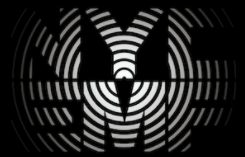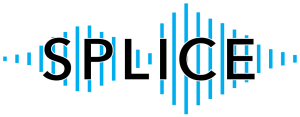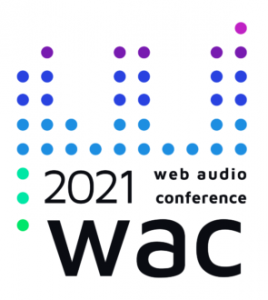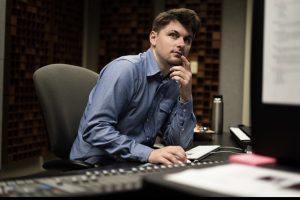By Austin Franklin, Special to the Sybaritic Singer
This summer was a renaissance of new and live music for many people. It was an opportunity to reconnect with friends and colleagues and to form new relationships with like-minded creatives. I was fortunate enough to have participated in several festivals and conferences earlier in the summer, most of which had been postponed or cancelled in 2020. Despite the incredibly brief respite this summer from the professional recess caused by COVID-19, some of these events were still held in a virtual or hybrid format. In my opinion this did not cheapen the quality of the experience. In fact, the variety in which to experience new music and art and to connect with people was one of the most refreshing things about my summer. It was nothing short of energizing.
I was fortunate enough to be invited to attend the Four Corners x CPI (collaborative Piano Institute) program held at Louisiana State University in early June. It was a summer institute spearheaded by the Artistic Direct Ana Maria Otamendi (along with an extensive list of vocal, piano, and string faculty) for collegiate classical performers to network and collaborate on various classical works which were showcased on a series of concerts during the final week of the event. This summer was the first time that the program had been expanded to include composers. The ensemble-in-residence (Four Corners Ensemble) commissioned several composers for a new work for clarinet, violin, cello, and piano which was to be premiered at the end of the program, while the week prior to the premiere was full of masterclasses with guest composers such as Mara Gibson, Shuying Li, and Michael Daugherty, as well as rehearsals with the Four Corners Ensemble.
The rehearsal time scheduled throughout the week was undoubtedly the highlight of the program. The Four Corners Ensemble was an incredibly collaborative, helpful, and eager group to work with. My time spent with them allowed me to not only listen to my work throughout the rehearsal process, but also to engage with the nuances of the score with the ensemble in a comprehensive way. Also, listening to the ensemble rehearse other composers’ music was incredible useful, as some challenges for either an ensembles coordination or the instruments themselves are so incredibly nuanced that you cannot hope to learn of/from them unless you witness them firsthand. Finally, after an intensive week of rehearsals and masterclasses the Collaborative Piano Institute concluded with the Four Corners Ensemble giving a spectacular premiere of newly the commissioned new works.
The New York City Electroacoustic Music Festival (NYCEMF) was held in a completely online (and novel) format this year. This is the largest showcase of electroacoustic music in New York City, and one of the largest festivals of its kind in the world. It includes a large program of fixed media and (pre-recorded) live electronic music, sound art installations, and several workshops that cover various topics related to electroacoustic music thought and practice, as well as new and emerging technologies.

Apart from the workshops and installations (which had specific time slots throughout the week), the program was distributed with links to each of the works to peruse and enjoy independently of all the other concertgoers. Given that there were 28 independent concerts, I personally found the format both practical and flexible since it allowed me to enjoy the music at more convenient times throughout the day. The extensive program featured everything from fixed media works, live electronic works, works including custom-built instruments, sensors, and even multimedia components. There was also an emphasis on music created during the pandemic, as well as several works that were selected for NYCEMF 2020 prior to its cancellation. All in all, this was by far the most extensive and comprehensive program I had the pleasure of attending this summer.
Attending SPLICE was another highlight of the summer. This was an intensive week-long institute for performers and composers to study the integration of live performance with electronics. Held virtually, each day began with an itinerary of 3-4 workshops over various electronic music techniques, software programs, and even philosophical discussions and it ended with a guest lecture by renowned electronic music artists followed by performances of various pre-recorded works. There were also several post-concert hangouts as well as electroacoustic improv sessions scattered throughout the week, which gave attendees the opportunity to make both new music and friends over a network using SonoBus.

Faculty members at SPLICE included Sam Wells who held workshops using Jitter and Javascript in Max and Per Bloland who held workshops using various IRCAM tools along with discussions about aesthetics in electroacoustic music. Christopher Biggs also held workshops using Ableton Live for performance and using DSP techniques in Max and guest lecturer Carla Scaletti headed a fascinating workshop using the KYMA Sound Design Environment. The New York-based experimental duo Popebama gave several performances and world premieres of electroacoustic works throughout the week that featured live signal processing, improvisation, sensors, and multimedia as well as lectures detailing their technical requirements and performance practice. There were too many faculty members, workshops, guest lecturers, and highlights from the performances to include. Rest assured that SPLICE offered a unique flavor perfectly suited for all palates regardless of experience or interest. It was an incredibly welcoming and inclusive environment for anyone wanting to learn about the growing world of electronic music and creative technologies.
The last big event of the summer was the Web Audio Conference, which was a three day international conference held in Barcelona, Spain dedicated to web audio technologies and applications. I was attending as an author presenting my research that demonstrated using web audio API’s as the basis for designing digital instruments and as a performer improvising a live browser and aerial silk performance entitled Aerial Glass. Circa a month before the conference was slated to be held, it was announced that WAC 2021 would be reorganized as a fully virtual event. Among the disappointment of not spending the week in Spain was the news that all the conference talks, papers, demos, and presentations would still be held in Barcelona time (GMT+2). This meant that for someone in Baton Rouge, LA (where I live), a performance or talk would be held anywhere from 1:00 AM to 10:00 AM CT.

Despite the time difference and virtual jet lag, the conference experience was overwhelmingly positive. There were a series of performances demonstrating different live coding languages such as Sema and Glicol, a collaborative telematic audiovisual performance by LSU alums Anthony Marasco, Nick Hwang, and Eric Sheffield, and an improvised piece using the Freesound API accompanied with solo extended vocal techniques by Ariane Stolfi. One of the most entertaining things about the conference was the virtual conference center space called gather.town. In this environment (which looked and felt like an old 16-bit Pokémon game) all attendees could log in, create an avatar, and explore the program by using keyboard arrow keys to walk around the center. In the paper and poster presentation hall, each author was given a section of the room in which to speak about their work. Entering a section would automatically connect your microphone and camera to the author, allowing you to ask questions and speak directly to others about the work.
This summer was a great opportunity to connect with new people and enjoy new music, and my experience at each of these events was overwhelmingly positive. There was an eagerness to reconnect with the creative collective and to be able to share the joy of music making and learning with others, and this desire is something COVID-19 has only managed to inflate. All three of the festivals/conferences mentioned above are open to composers, performers, researchers, and hobbyists, and I hope that if you are considering applying for a summer program in the future you will start with one of these. You will leave with a renewed passion for your art along with many new and lasting friendships.
P.S. Since each of these events were each held virtually, I have included links to where you can watch concerts, lectures, and other festival events for NYCEMF, SPLICE, and WAC:
- NYCEMF: https://nycemf.org/ (links to pieces are embedded in the program)
- SPLICE: https://www.youtube.com/channel/UCNESlzNRz9Ilbug8aB1dE3w
- WAC: https://www.youtube.com/channel/UCMaHc1Rq2viM88OsluS2WWw

Austin Franklin is an internationally recognized composer and sound artist based in Baton Rouge, LA where he is currently pursuing a PhD in Experimental Music & Digital Media from Louisiana State University. His interests include music involving process, such as algorithmic composition and music incorporating machine learning technologies. His latest album, Four Idols, has been described as “an elegant, artistic statement that demonstrates the flexible possibilities of electronic music” (The Sybaritic Singer). Austin has several pieces for percussion published through C-Alan Publications and his music has been performed throughout North America, South America, Europe, and Asia. He is the recipient of several awards and commissions, including the RMN Call for Electroacoustic Works 2021, SCI Region IV Mixtape, PARMA Winter Call for Scores, the Dead Resonance Call for Aleatoric Scores, the Sound/Sight Art Collaboration, and the CNME Call for Scores. His music has also been selected for festivals and conferences such as NMOB, SPLICE Institute, NYCEMF Festival, WOCMAT, Alba Music Festival, and Electric LaTex. Austin has presented research at WAC that explores using Web API’s as the basis for designing digital instruments, and at the NIME that involves simultaneous auditory and vibrotactile stimuli. For more visit austinfranklinmusic.com.
